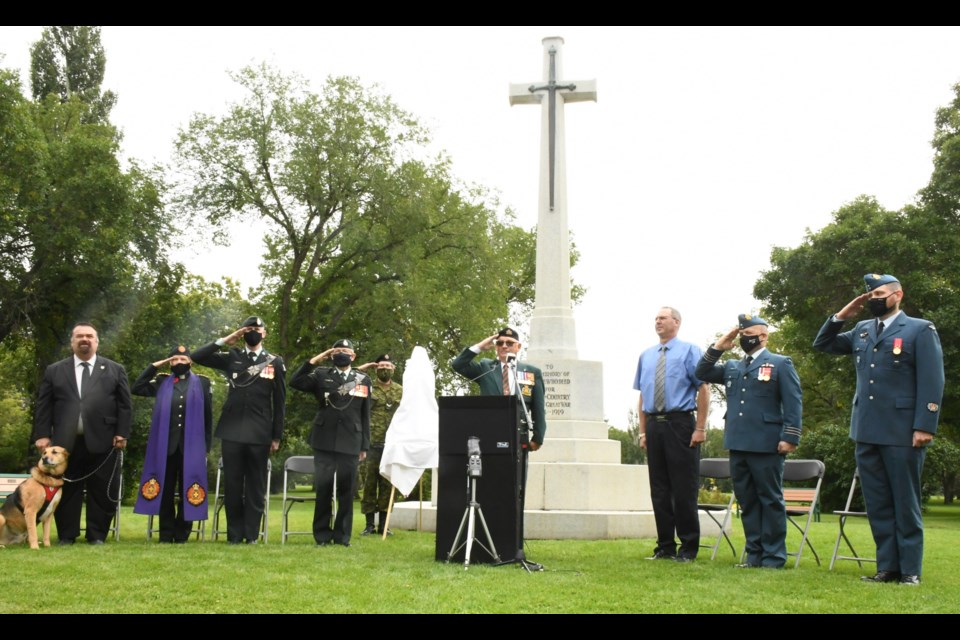It was a cold and rainy morning in Mons, Belgium, when Pte. George Price led a small patrol of Canadian soldiers through ruined buildings searching for the enemy.
Shivering, tired and hungry, Price had survived Canada’s 164-kilometre advance through France and Belgium that started in August 1918 and had almost pushed the Germans out of Northwest Europe. Now the end was in sight — rumours were circulating that the war would end very soon — but Price decided to continue searching for Germans.
Leaving protection, the Moose Jaw resident ran toward another building before a shot ran out. A sniper’s bullet hit the 25-year-old in the heart and killed him instantly.
It was 10:58 a.m. on Monday, Nov. 11, 1918, the last day of the war — Armistice Day. Two minutes later, at 11 a.m., the bells in Mons rang out to signify that the First World War — the Great War, the War to End All Wars — was over.
Born in Nova Scotia in December 1892, Price moved to the Moose Jaw and worked on area farms before enlisting in October 1917. He started with the 210th Battalion and eventually ended up in the 28th Battalion.
One-hundred-three years later, on Aug. 26, Moose Jaw’s veterans and military community gathered in Crescent Park to honour Price — the last Allied Commonwealth soldier to die during the war — with the unveiling of a plaque.
The Friends of the Forces Fellowship organized the event, which featured speakers from the provincial government, the fellowship, and the Royal Regina Rifles regiment, a unit that perpetuates the 28th Battalion. Also on hand were members of the Legion, the ANAVETS and 15 Wing airbase.
Lyle Johnson, chairman of the fellowship’s George Price Memorial sub-committee, worked with members during the last two years to bring the plaque to fruition.
He explained that Price has not received enough recognition in the community even though he lived here and fought and died during the First World War.
However, Price now has that recognition as the plaque will be affixed to a rock near the cenotaph.
While Moose Jaw has few monuments to Price, there are many memorials dedicated to him in Belgium, including bridges, schools, and plaques. There is also a similar plaque near the bridge where he died.
“(Price) was killed doing his job. He could have sat down behind a wall, but that wasn’t what he was trained to do. So, he kept going right until the end of the war,” added Johnson. “A loss of a 25-year-old of a man who had a lot of future in our country is a tragedy we have to make sure we recognize.”
An interesting footnote is that Price is buried in a cemetery near the first British soldier killed in the war.
Randy Brooks, the honorary colonel of the Royal Regina Rifles, described Price as an “ordinary soldier,” something all soldiers desire so the enemy ignores them. However, Price became extraordinary because he was the last Allied soldier to die in battle.
“While other people were hiding in the buildings waiting for the Armistice to commence, he took action,” said Brooks. “Something required him to break cover, so he went to lead his soldiers onto other buildings and unfortunately, that was his last act.”
Installing the plaque is important since it recognizes not just Price, but other ordinary soldiers who work hard, he continued. Every soldier within the Rifles regiment has a story, which the organization attempts to record with available information.
Rifles members honour Price by wearing “collar dogs” or a unit pin that is similar to what members of the 28th Battalion wore. This helps modern-day soldiers remember the unit’s connection to that battalion.
“It’s interesting that the folks overseas in Belgium have never forgotten the actions of Canadian soldiers and they’ve never forgotten George,” Brooks added. “And it’s now up to us back in Canada to make sure that we remember him as well.”




